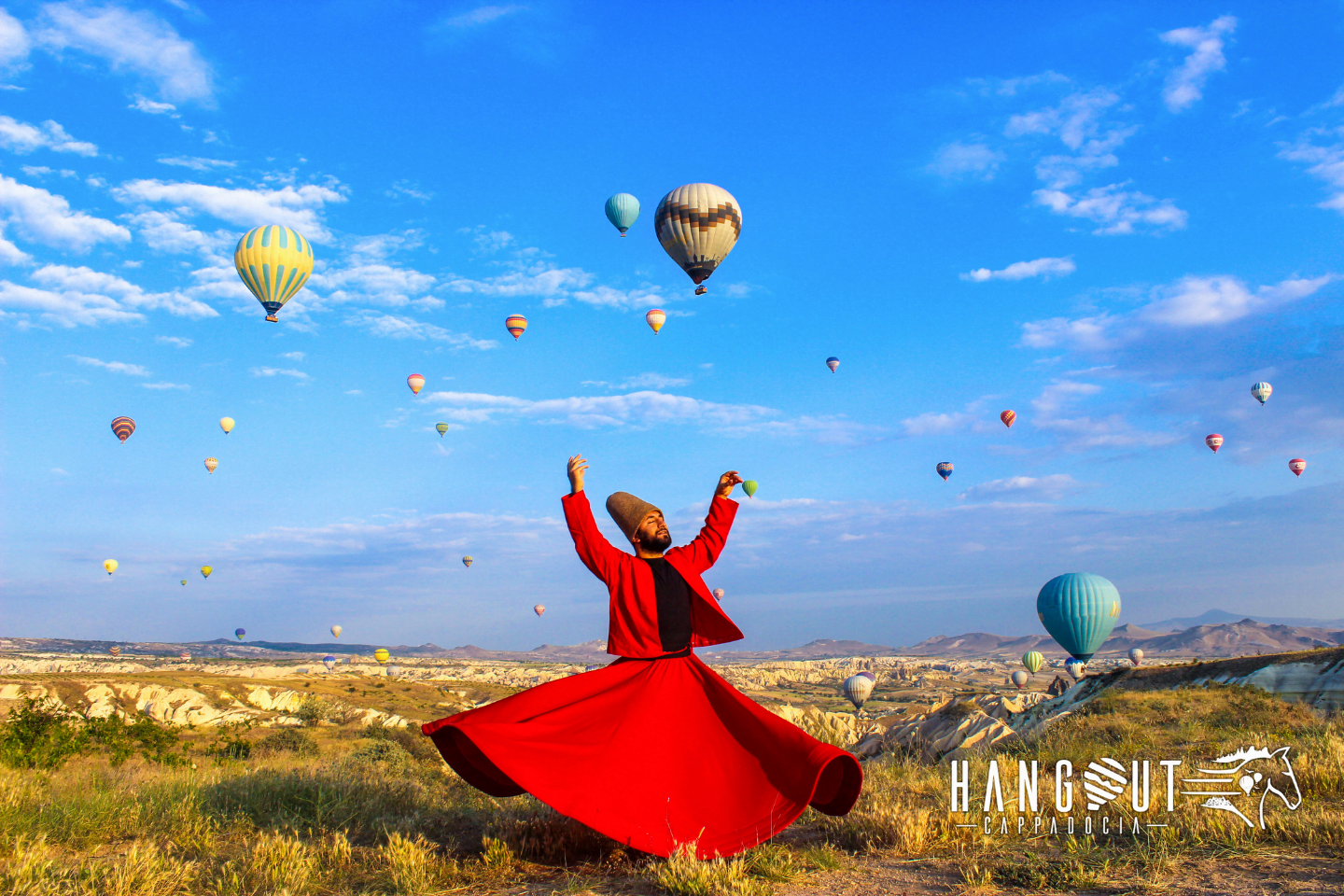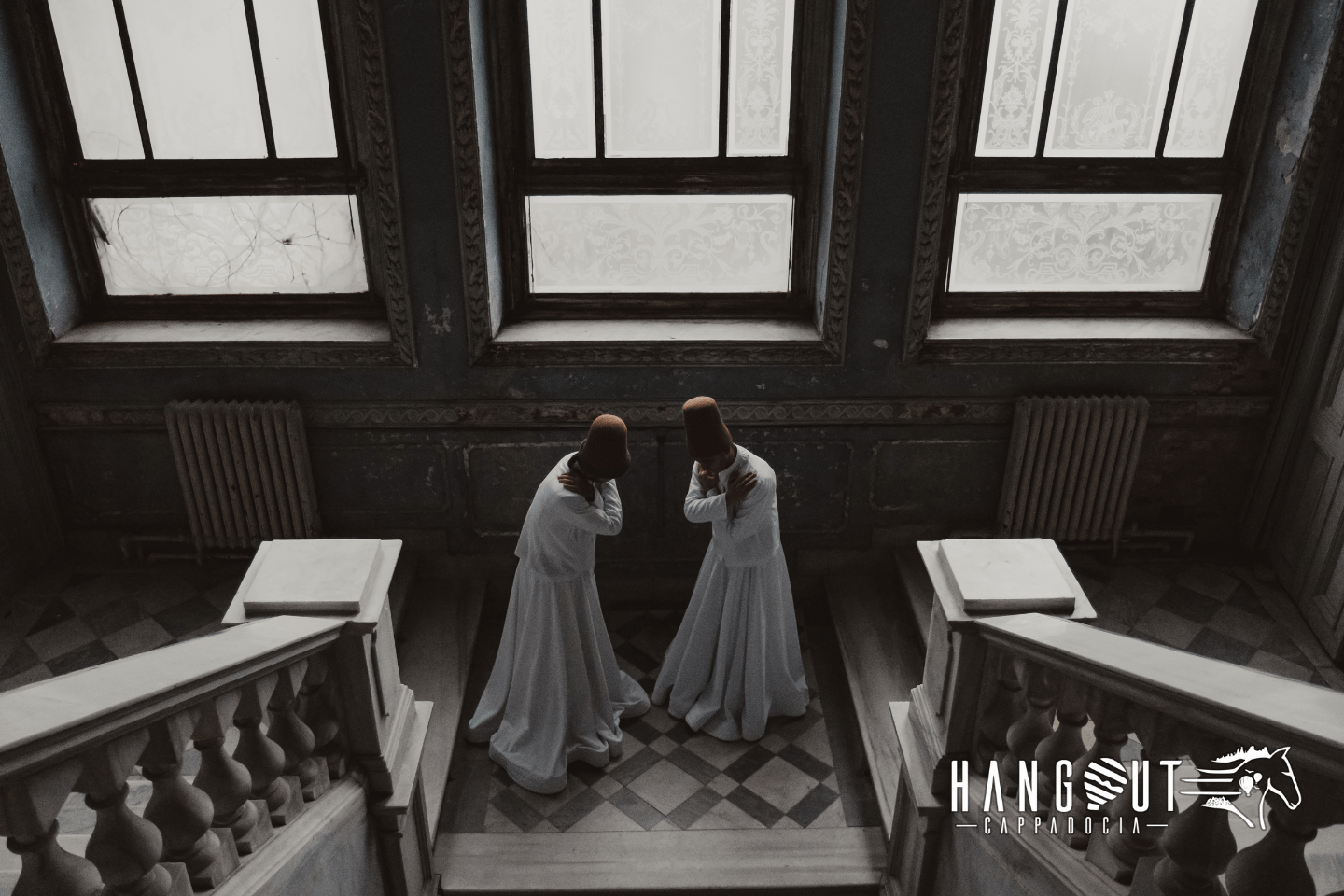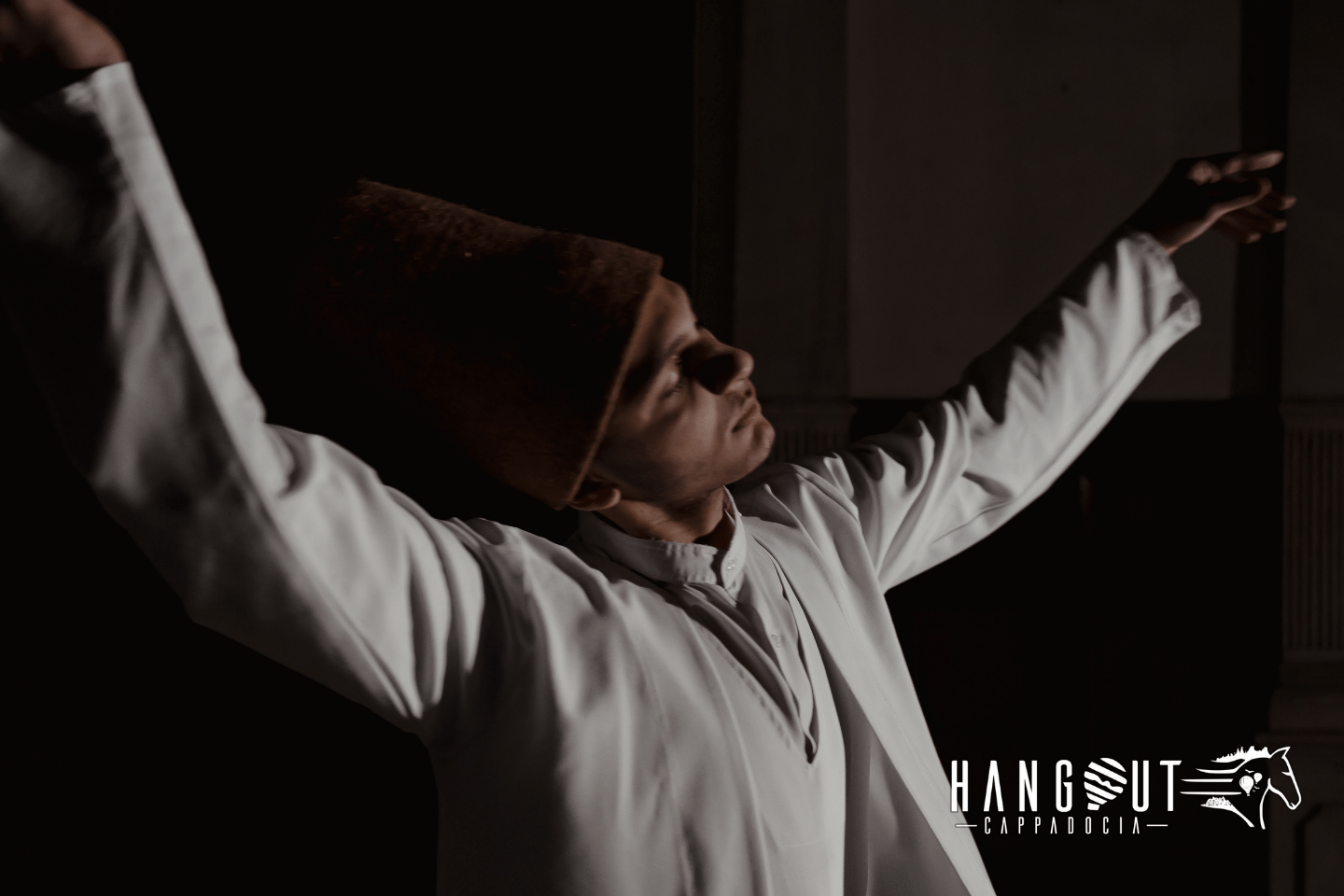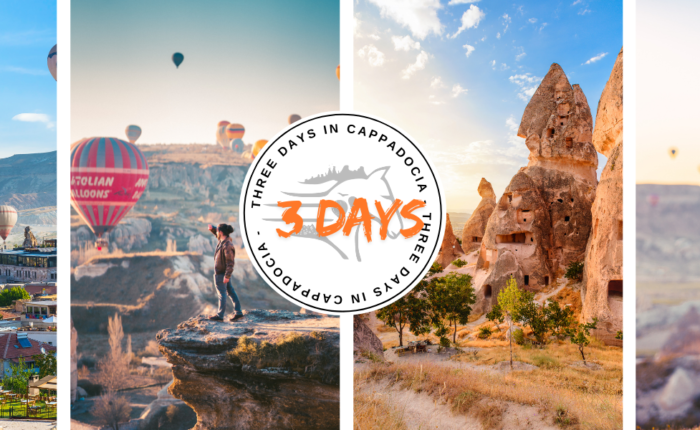Kapadokya Semazen Gösterisi
Kapadokya Semazen Gösterisi
Cappadocia Whirling Dervish is a celestial and special show made in a Cappadocian stone carved or cave location. This ceremonial show represents the mystical journey of spiritual ascension towards perfection in love, abandonment of ego, and contemplation of truth.
Sufism, also known as Islamic mysticism, is a spiritual practice within Islam that focuses on seeking a deeper, more personal connection with the Divine. It emphasizes inner purification, self-discipline, and the pursuit of spiritual enlightenment. One of the most iconic symbols associated with Sufism is the semazen (whirling dervish), a practitioner of the Sema ritual. This ritual is particularly linked to the Mevlevi order, founded by the followers of the 13th-century Persian poet and mystic, Jalaluddin Rumi.
The “Sema” is a spiritual dance meant to symbolize the soul’s journey toward God. In this ritual, the dervishes wear long white robes and tall conical hats. As they spin in a meditative state, they aim to transcend the material world and reach a state of spiritual ecstasy. Each part of the ceremony holds symbolic meaning: the tall hats represent tombstones, the white robes symbolize shrouds, and the dervishes’ spinning represents the movement of the planets around the sun, symbolizing their revolving around God.
In time, “Sema” became a name that corresponds to the Sufi’s listenings to poetry and hymns in a state of fascination, and the ecstasy they felt during this listenings and the way they recited dhikr while standing. Since the dervishes generally dance in circular motions during the Sema ritual, the sema is also called “devir” (cycle) or “deveran” (whirling). According to the understanding of Sufism, all the truths of the universe are heard during the Sema ritual, and those who perform this whirling ritual then try to behave and live as required by these truths.
One key aspect of Sufism is its focus on love as a path to the Divine. Sufi mystics often speak of divine love as the ultimate goal of human existence. This is evident in the poetry of Rumi, who wrote extensively about love as a means of transcending the ego and attaining unity with God. Sufi practices, including the Sema, are seen as ways to cultivate this love and devotion.
The Sema ritual, performed by the semazenler (whirling dervishes), is perhaps the most recognizable symbol of Sufism. This sacred dance is central to the Mevlevi Order and serves as a spiritual expression of devotion and a means of achieving union with God.
Historically, Sufism has played a significant role in the spread of Islam, especially in regions like the Ottoman Empire, Persia, and the Indian subcontinent. While some traditional scholars viewed Sufism with skepticism due to its mystical elements, it has endured as a deeply influential spiritual practice, offering a more personal, emotional, and intimate path to experiencing Islam.
Sufi’s accepted the idea of getting up, moving and turning while listening to the Sema (an Arabic word with the meanings of “Sky”, “Heaven”, “Happiness”), vecd (an Arabic word for “Ecstasy”), music and poetry since the early days of Islam. Mevlevi order is a sect that developed after the death of Mevlana Celaleddin Rumi, who lived in the 13th century, based on his mystical thoughts. In Arabic “Semi” means hearing therewithal the metaphorical meanings of this word are song, melody, music and dance.
Today, Sufism and the semazen continue to inspire people worldwide, not only within Islamic communities but also among those seeking spiritual insight.
Where are the Whirling Dervishes in Cappadocia?
The most famous and known whirling dervish shows in Cappadocia are made in the historical Saruhan Kervansaray or in Dervish Houses.
The Cappadocia Whirling Dervish Show starts just about 6 pm every day during the year.






